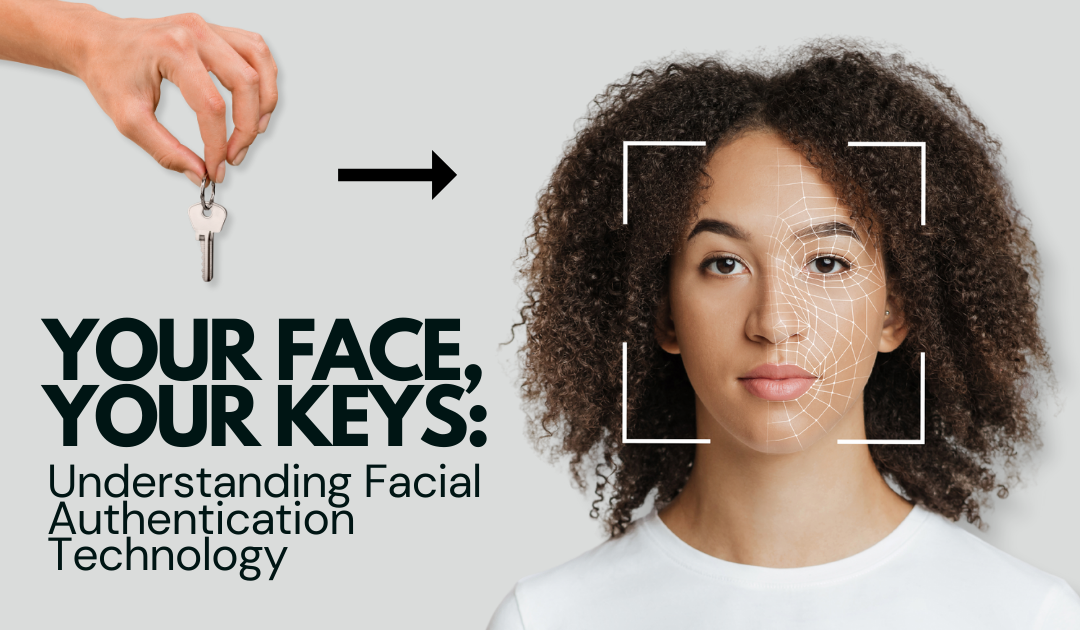In the evolving narrative of security, a new chapter is being written, one that may soon render traditional keys and passwords obsolete. Facial authentication technology is stepping into the spotlight, merging convenience with high-level security to protect our digital lives. What is facial authentication? How does turning your face into a key enhance security? What are its implications on privacy and data protection? And what do advancements in this field mean for the future of security measures in both our physical and digital worlds? Let’s find out.
What is Facial Authentication Technology?
Facial authentication, a biometric verification method, relies on unique facial features like eye distance and cheekbone shape to confirm identity. Utilizing advanced algorithms and machine learning, modern systems distinguish real individuals from photos or videos, enhancing resistance to spoofing. These systems adapt to gradual appearance changes, ensuring consistent functionality over time. Importantly, facial authentication requires active user presentation to a reader, highlighting user consent and deliberate interaction. In contrast, facial recognition may passively capture facial data without user engagement, potentially leading to profiling through digital cameras. Understanding this distinction is crucial, emphasizing the privacy-centric nature of facial authentication compared to the potential privacy concerns associated with facial recognition.
Applications of Facial Authentication Technology
The applications of facial authentication are quite extensive, and the technology is increasingly found in various industries:
- Enterprise:
- Businesses implement facial authentication for secure access to corporate systems, ensuring authorized personnel can seamlessly and safely navigate sensitive information.
- Data Centers:
- Data centers utilize facial authentication to bolster security protocols, allowing only authorized personnel entry to critical infrastructure and sensitive data storage areas.
- Healthcare:
- In healthcare, facial authentication is employed for safeguarding access to narcotics while ensuring that all applicable regulatory compliance is met.
- Financial Services:
- Banks and financial institutions leverage facial authentication for customer identification, minimizing fraud, streamlining operations, and enhancing the overall user experience during transactions and account access.
- Education:
- Educational institutions adopt facial authentication for secure access to campus facilities, protecting student and staff information, and ensuring a safe and controlled learning environment.
- Stadiums and Arenas:
- Facial authentication is increasingly deployed in stadiums and arenas for access control, ensuring the overall security and safety of athletes and staff.
- Utilities:
- Utility companies integrate facial authentication to secure access to critical infrastructure, ensuring only authorized personnel can manage and monitor essential utilities.
- Regulated Markets:
- Industries operating in regulated markets, such as pharmaceuticals or energy, incorporate facial authentication to comply with stringent regulations, ensuring secure and authorized access to sensitive areas or data.
The Benefits of Facial Authentication
The prime advantage of facial authentication technology is its blend of user-friendliness and security. It’s nearly seamless—no need to remember complex passwords or swipe a card. It’s also swift, often taking just a fraction of a second for a match to be confirmed. What sets facial authentication apart is its pioneering integration of artificial intelligence and learning capabilities, elevating it to the pinnacle of reliability and making it the most reliable form of biometric authentication available today.
As facial authentication technology continues to evolve and reach greater levels of sophistication, it not only enhances security but also poses a formidable challenge for unauthorized users seeking access. The use of 3D models and liveness detection adds layers of anti-fraud measures that surpass traditional security methods.
Facilitating Trustworthy Use of Facial Authentication
To maximize the benefits of facial authentication while minimizing potential harm, it’s crucial to establish and enforce comprehensive data protection regulations. Transparency in the functioning of facial authentication systems, along with user consent and strict limitations on data usage, are fundamental measures needed to preserve user rights and privacy.
Furthermore, ongoing research and development are vital in improving the accuracy of facial authentication systems and ensuring they are unbiased and equitable. Tech companies and researchers must work together to refine these algorithms, ensuring they are tested across diverse populations.
The Future of Facial Authentication Technology
Looking forward, innovation in facial authentication is likely to continue rapidly. We may witness a more seamless integration of it into our daily routines—from homes that recognize residents to stores offering personalized shopping experiences based on recognized loyalty.
On the technological front, advancements in artificial intelligence and machine learning will further refine the accuracy and speed of facial authentication systems. We can also expect stronger encryption methods and decentralized models for data storage to bolster the security and privacy aspects of these technologies.
Innovate, Regulate, Authenticate
The advent of facial authentication technology signifies a watershed moment in the evolution of security measures. It brings with it a range of possibilities and advantages that, if harnessed correctly, could significantly enhance the user experience across many domains. Yet, its promise is accompanied by significant responsibilities concerning ethical use, privacy protection, and algorithmic transparency.
As the capabilities of facial authentication technologies grow, society will need to confront and navigate the nuanced challenges they present. While your face may very well become your key to the future, ensuring the lock is well-guarded will be the ultimate task for innovators, regulators, and users alike.
In the landscape of digital identity, the path forward requires careful stewardship. By balancing convenience and vigilance, we can embrace the transformative potential of facial authentication technology and step confidently into a future where our faces not only represent us but protect us as well.
Securing the Future with AI-Powered Biometric Access Control
Learn how Suprema’s expertise in biometric access control technology is enhanced by the power of Artificial Intelligence (AI).

